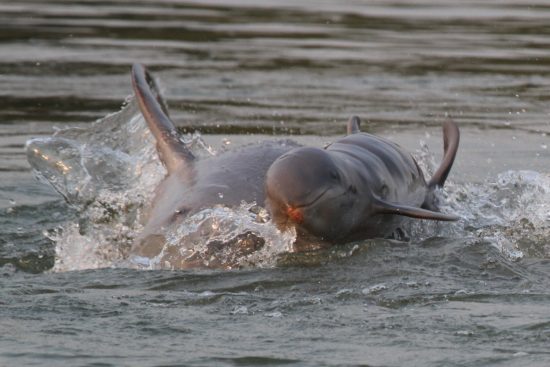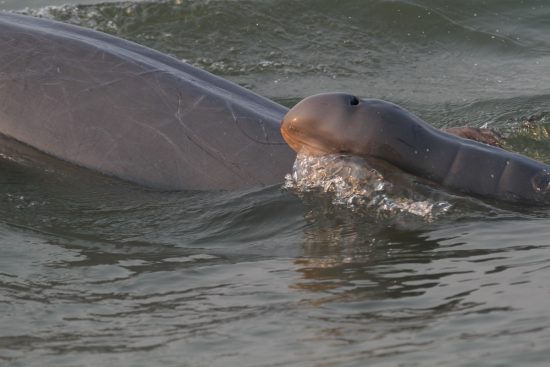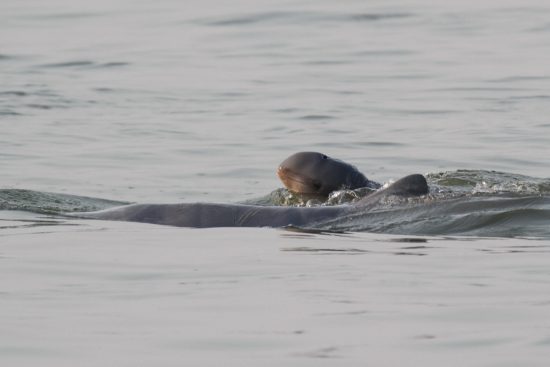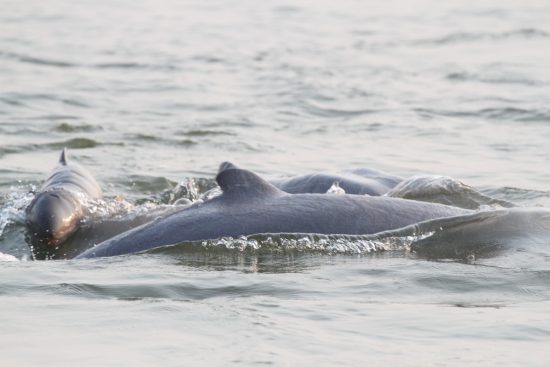





New hope for Mekong River's dolphins
Newly born calf spotted with mother: Break out the cigars and
champagne: A young dolphin calf and her mother have been spotted last
week in the waters in the Mekong River near the town of Kratie.
It is estimated that only 80 Irrawaddy river dolphins (sometimes called Mekong dolphins [Orcaella brevirostris])
are currently in existence, making the species highly endangered.
Stefan Ziegler from WWF Germany called it a glimmer of hope for the
dolphins and said that it encouraged his team to continue to fight for
the dolphin's protection.
In the past, there were tens of thousands of animals in the Mekong
River, Asia's longest river. In recent decades, the number of Irrawaddy
river dolphins has plummeted drastically as a result of fisheries
making use of electroshock devices, nylon gill nets, poisons and
explosives to catch them. The ban of such destructive fishing methods
and the employment of river guards have helped to stabilise the
dolphin's population.
However, Ziegler said, "Their survival still
hangs in the balance."
These dolphins continue to be under the threat of pesticides and heavy
metals legacies from agriculture and industry. Hydropower plants also
pose a threat as they prevent fishes - the dolphin's main prey - from
reaching their spawning grounds. In particular, the proposed
construction of the Don Sahong Dam in Laos near the Cambodian border is
expected to lead to a complete collapse of the fish population, on
which the dolphins and fish - as well as the local population - depend
on.
Mekong dolphins give birth only every two to three years. The 80
dolphins are concentrated in several deep water pools along a 150-190
kilometre stretch of the Mekong River, between Kratie town and the
Laotian border. They can be more than 2.7 metres long and weigh 150
kilogram’s.
In 2004, the population declined by seven percent; today,
it is 1.6 percent. According to the WWF, although the dolphins continue
to be endangered, their population appears to be recovering.
To curb overfishing and illegal fishing, ten community fisheries have
been established at WWF Mekong where fishing is strictly prohibited.
Sixty-eight river guards have been trained and equipped to enforce this
regulation. They are spread over 16 posts and will patrol the dolphin's
core habitats and buffer zones.
To provide the local population with
alternative sources of income, WWF is also working with the local
community to promote ecotourism and dolphin-watching.
For more information see here
 Herbert
Herbert 7th July 2016
7th July 2016 Kratie, Kambodscha
Kratie, Kambodscha 